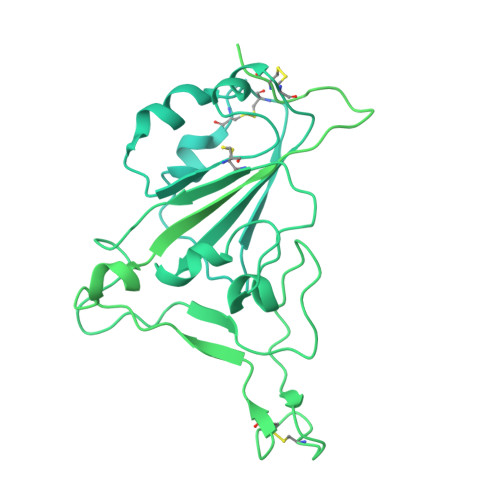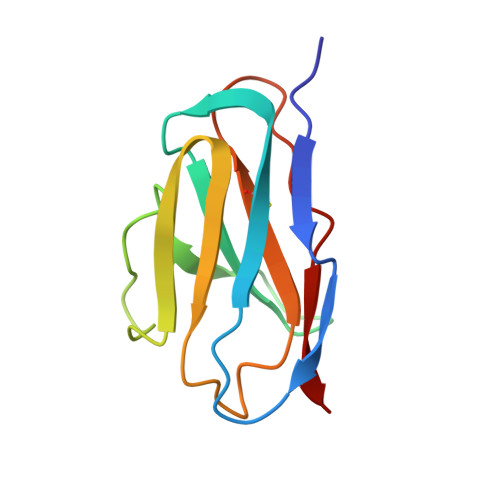Rational development of a human antibody cocktail that deploys multiple functions to confer Pan-SARS-CoVs protection.
Yao, H., Sun, Y., Deng, Y.Q., Wang, N., Tan, Y., Zhang, N.N., Li, X.F., Kong, C., Xu, Y.P., Chen, Q., Cao, T.S., Zhao, H., Yan, X., Cao, L., Lv, Z., Zhu, D., Feng, R., Wu, N., Zhang, W., Hu, Y., Chen, K., Zhang, R.R., Lv, Q., Sun, S., Zhou, Y., Yan, R., Yang, G., Sun, X., Liu, C., Lu, X., Cheng, L., Qiu, H., Huang, X.Y., Weng, T., Shi, D., Jiang, W., Shao, J., Wang, L., Zhang, J., Jiang, T., Lang, G., Qin, C.F., Li, L., Wang, X.(2021) Cell Res 31: 25-36
- PubMed: 33262452
- DOI: https://doi.org/10.1038/s41422-020-00444-y
- Primary Citation of Related Structures:
7CWL, 7CWM, 7CWN, 7CWO - PubMed Abstract:
Structural principles underlying the composition and synergistic mechanisms of protective monoclonal antibody cocktails are poorly defined. Here, we exploited antibody cooperativity to develop a therapeutic antibody cocktail against SARS-CoV-2. On the basis of our previously identified humanized cross-neutralizing antibody H014, we systematically analyzed a fully human naive antibody library and rationally identified a potent neutralizing antibody partner, P17, which confers effective protection in animal model. Cryo-EM studies dissected the nature of the P17 epitope, which is SARS-CoV-2 specific and distinctly different from that of H014. High-resolution structure of the SARS-CoV-2 spike in complex with H014 and P17, together with functional investigations revealed that in a two-antibody cocktail, synergistic neutralization was achieved by S1 shielding and conformational locking, thereby blocking receptor attachment and viral membrane fusion, conferring high potency as well as robustness against viral mutation escape. Furthermore, cluster analysis identified a hypothetical 3rd antibody partner for further reinforcing the cocktail as pan-SARS-CoVs therapeutics.
Organizational Affiliation:
State Key Laboratory for Diagnosis and Treatment of Infectious Diseases/National Clinical Research Center for Infectious Diseases, First Affiliated Hospital, Zhejiang University School of Medicine, Hangzhou, Zhejiang, 310003, China.
















